The notion of superfoods is often hyped in social and traditional media by the health and wellness industry. The term generally describes foods rich in nutrients that benefit humans. Calling a certain food “Super” implies that this particular food is superior to others. Considering that the superfood call-out is not defined nor regulated by anyone. Consumers may be vulnerable or misled into believing that certain foods are better for their health than others.
This article examines the nutritional value of foods commonly referred to as superfoods. It assesses the scientific evidence supporting the claims that supposedly make them “Super.” We will also cover some of the marketing terms used by the industry and see if they are credible. Throughout the article, we will guide ourselves by the notion that there are no good or bad foods. But there might be good or bad diets.
What is a Superfood?
Let’s start with this: superfood is a marketing term, not a scientific one. This marketing term is often used to describe a food with a relatively high concentration of non-caloric nutrients or bioactive compounds compared to the food’s overall caloric content. Non-caloric nutrients are essential for human health. However, they do not contribute to the energy needs of the body. The most common examples are water, fiber, vitamins, minerals, and trace elements. Bioactive compounds are not essential for maintaining human health. However, they have many health benefits, like being antioxidant, anti-inflammatory, or neuro-protective.
The most common examples are polyphenols, flavonoids, phytoestrogens, and prebiotics. As mentioned earlier, a “superfood” is a popular buzzword lacking a scientific-style definition. The definition provided in the article is based on observing what the health and wellness media calls superfoods. Consequently, this definition has many exceptions, as the following examples illustrate. But first, another insightful observation is that superfoods come from various food groups. Like fruits, vegetables, grains, dairy, seeds, and fish. This is a testament to the power of eating healthy through a balanced diet.
Superfoods Hall of Fame
Superfoods are so famous for various reasons. The most important is their striking colors, alluring tastes, and unique textures, making them a great addition to culinary creations. Another reason is that their unique nutritional values create a lot of interest from nutrition researchers to validate their importance for numerous health benefits. Finally, the positive findings of that scientific research create an excellent context for the media to engage consumers. This doesn’t necessarily mean that the health benefits of nutrients in some of the most popular superfoods are not present in other less popular foods. The following list covers the most medically reviewed superfoods. That are recently gaining popularity and explores the validity of evidence supporting their widely claimed health benefits:
Sweet Potatoes
Hands down, the king of superfoods. If we put together a 100 superfoods list, sweet potatoes will be on top of this list. Sweet potatoes fit the definition perfectly. They are a staple food widely grown in many regions of the world and possibly one of the top 5 crops in the world. Hence, it is highly accessible and affordable across all socioeconomic classes. In addition, it has one of the most nutrient-dense compositions compared to caloric content. Lastly, the level of scientific evidence supporting the health benefits of sweet potatoes is staggering and hard to match with other staple foods. Let’s get into the details.
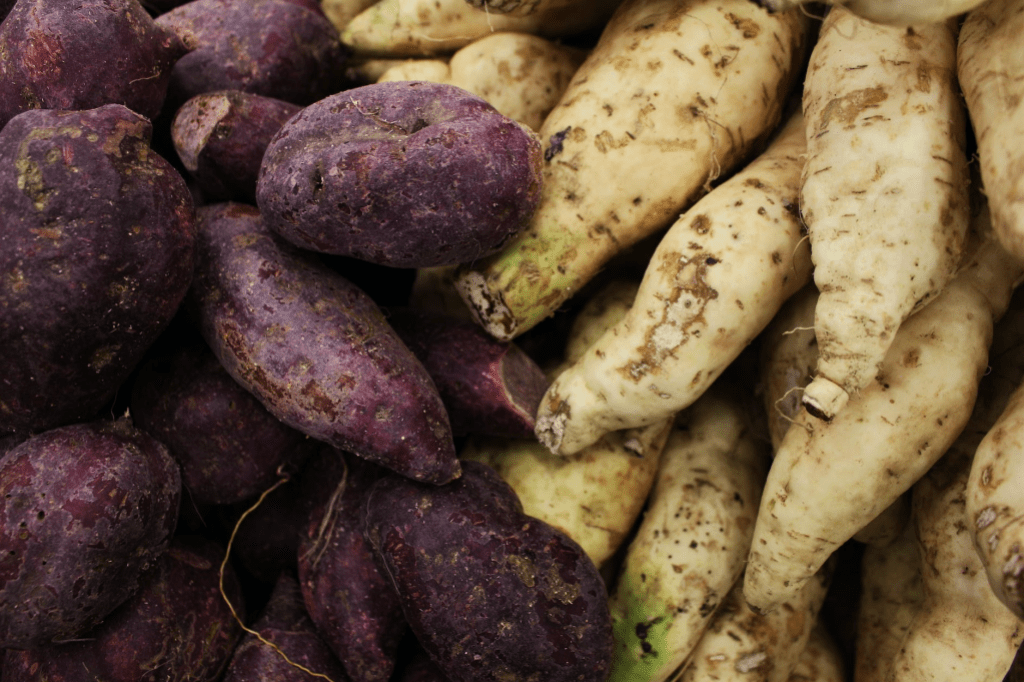
From an essential nutrition point of view, there are slight variations between the species of sweet potatoes. You can recognize them by their fascinating colors: white, yellow, orange, and purple. The main difference is related to the content of bioactives and phytochemicals. A sweet potato’s primary nutritional value is its carbohydrate content, roughly 85% of its dry weight (excluding water). About 15% of the carbs in a sweet potato are simple sugars. Mainly sucrose, that give it a pleasant sweet taste. The remainder of carbs are slowly digestible, resistant starch and non-digestible fibers. This high concentration of healthy carbs has prebiotic effects that promote the growth of beneficial bacterial flora in the human gut. It also supports a healthy metabolic and cardiovascular response that can benefit everyone. But is especially helpful in managing blood glucose levels for people with type 2 diabetes or pre-diabetes.
Sweet potatoes have an almost negligible fat content. They also have a small but high-quality protein content. However, sweet potatoes are considered one of the best sources of carotenoids (mainly beta carotenes). They are the precursors of vitamin A in the human body, and are called provitamin A. 100 grams of sweet potatoes would supply 120% of the daily requirements of vitamin A for an average human adult. That is much higher than carrots or mangos. Sweet potatoes are also a good source of vitamins C, B6, Manganese, and Potassium. They are rich in many vitamins and minerals in lesser quantities.
This is where sweet potatoes’ medicinal properties come to life. As they contain a wide variety of phytochemicals that have well-researched health benefits. Flavonoids are well known for their antioxidant function against free radicals. They also have a lot of synergistic functions with carotenoids. It is essential to mention that purple species are the most abundant in flavonoids. While the orange ones are the most abundant in carotenoids. Various researchers reviewed and demonstrated other health benefits like antimicrobial, anti-diabetic, anti-cancer, anti-inflammatory, hepatoprotective, neuroprotective, anti-obesity, and gut health-promoting properties. However, sweet potatoes’ anticancer and cardiovascular benefits are undeniable. That would require a dedicated article to focus on this topic alone. These two conditions, Cancer and Cardiovascular diseases, contribute to the highest mortality rates among many populations around the world.
Chia Seeds
The ancient Aztec calorically dense food is still considered novel in Europe. Chia seeds are a nutritional wonder that has solidly become a top superfood. The tiny seeds are so hygroscopic they can absorb 12 times their weight in water and turn into a gel-like substance. That makes them perfect for making puddings without any additives. A great combination of soluble fibers, high-quality proteins, omega-3 fatty acids, B vitamins, and various minerals. Unsurprisingly, Chia seeds are a nutrient-dense food full of phytochemicals and bioactive peptides that offer humans an array of health benefits that are well-proven by science. Let’s dive right in.
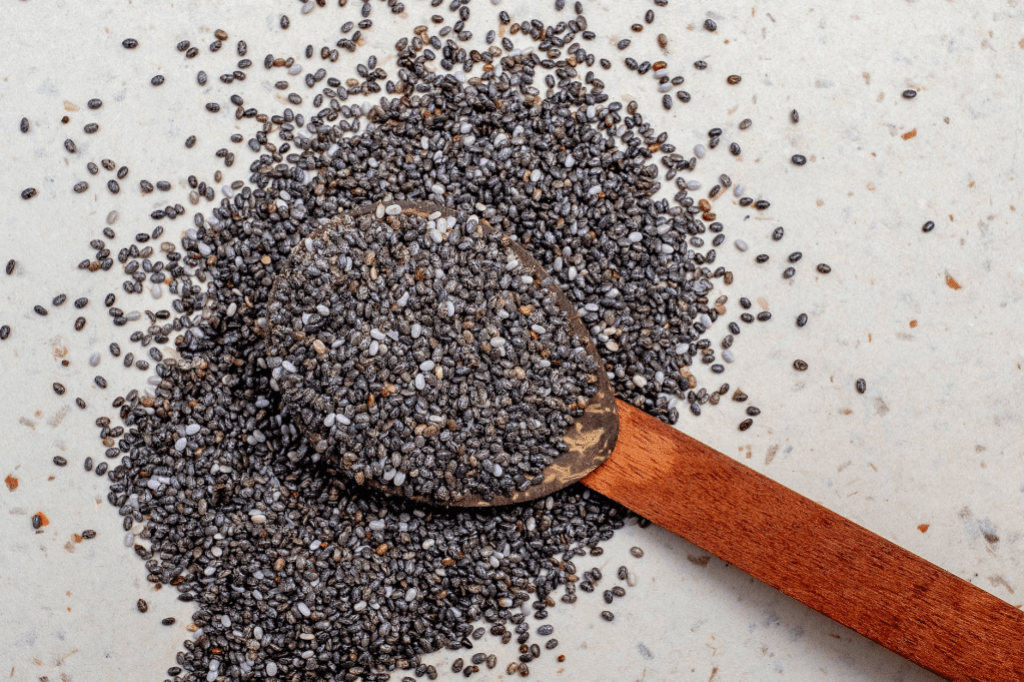
We like to always start with the most abundant nutrient in food because it always gives a clue about its most valuable health benefits and environmental role. For chia seeds, this nutrient is soluble fiber; every 100 grams contains 35 – 40 grams of fiber that dissolves in water, expands in size, forms a gel, and gives it a distinct gel texture. This gives a clue about the first health benefit, managing constipation.
However, having a closer look, this high content of soluble fiber also helps regulate blood glucose and cholesterol levels, maintains weight and satiety, boosts the health of our colons, and can have antiaging benefits as well. Beyond fiber, chia seeds are a great source of omega-3 fatty acids. Alpha-linolenic acid constitutes 75% of the fat content of chia seeds, making them an effortless and pleasant way for humans to boost cardiovascular and mental health and reduce inflammation through its medically reviewed anti-inflammatory effect.
Apart from the benefits of fiber and omega-3s widely covered by the wellness media, another aspect of chia seeds makes them highly valuable for human health and natural wonder. Chia seeds have almost 20% of their weight in proteins, not just any protein; they have a good concentration of bioactive peptides. These are smaller structures of multiple amino acids that exert biological functions in the human body. Analyzing amino acid sequences in chia seeds showed peptides with bioactive potential, including dipeptidyl peptidase-IV inhibitors and angiotensin-converting enzyme inhibitors. These bioactive peptides explain how consuming chia seeds can help lower blood pressure.
While chia seeds are not a good source of vitamins in general, a 100-gram serving provides the human body with more than 50% of the daily needs of vitamins B1 and B3, which makes it a natural way to boost metabolism. Chia seeds are an excellent source of minerals like magnesium, manganese, and phosphorus; the same portion provides more than 100% of the daily needs of those three minerals and more than 60% of calcium, iron, and zinc. Chia seeds are thus a valuable source of nutrition and have numerous health benefits when consumed in relatively small portions.
Greek Yogurt
This section might be short, as this will be the first superfood I will debunk in this article. At this point, I would like to let you know that Greek yogurt has been the primary source of business growth in the dairy industry in recent years. This industry has been struggling because milk is losing part of its fame as a healthy food for young and older adults. While many sources tout Greek yogurt as a superfood, this might be mainly because of commercial interests rather than genuine nutritional and scientific interests.
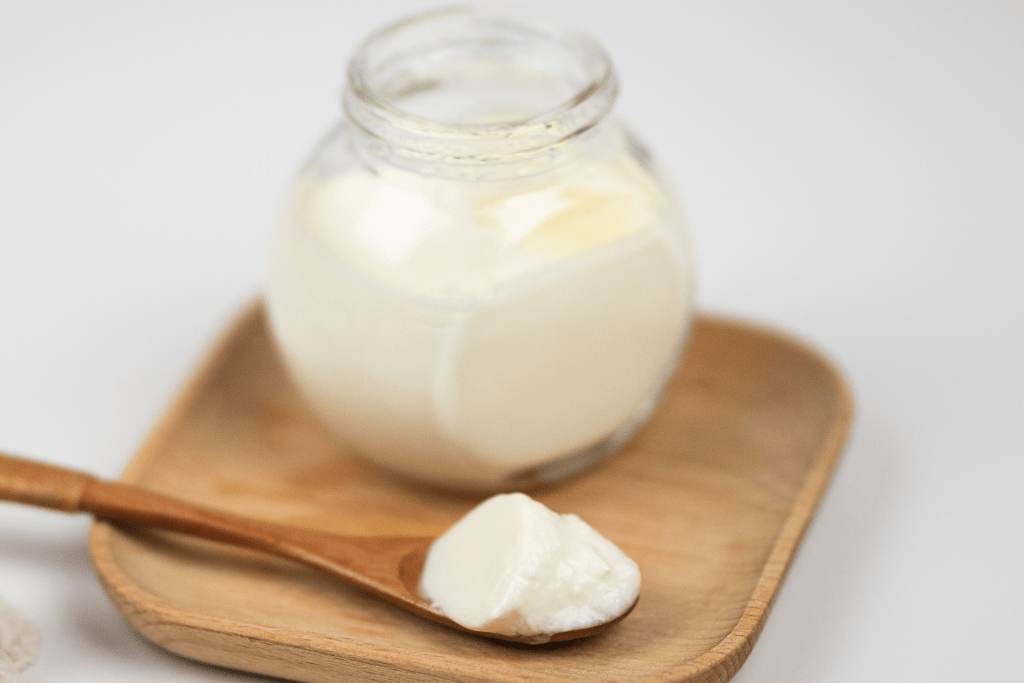
Strain yogurt is an ancient food popular in many eastern Mediterranean cultures. It is made by straining cultured milk from cows, goats, and buffalos to reduce the whey content of the protein and, consequently, part of the lactose. This technique results in a smoother, more decadent yogurt with higher protein and lower carbs, and when made with low or non-fat milk, this can easily create the illusion of a superfood. Fat-free Greek yogurt, the most widely available form of strain yogurt in North America and Europe, has roughly 60 calories for every 100 grams, 10 grams of proteins, and less than 3 grams of lactose. While this makes it a good source of high-quality proteins, you can get similar levels of proteins from various other dairy products like UHT milk, regular yogurt, and various types of cheese.
Greek yogurt has modest vitamin B2 and B12 levels, calcium and phosphorus. Beyond that, it has little or no nutritional value in supplying other vitamins, minerals, or fiber, so it is challenging to call it a nutrient-dense food. While yogurt is a great source of lactobacillus probiotic bacteria that greatly benefit the human immune and digestive systems, this is not unique to Greek yogurt. All mammals’ milk is an excellent source of bioactive compounds from peptides, oligosaccharides, and milk fat globules. Those bio-actives have several health benefits to humans, like lowering blood pressure, antimicrobial activity to protect against infections, and blood sugar-lowering effects to protect against diabetes and obesity. This is not unique to Greek yogurt; Greek yogurt might have diminished content of those bio-actives due to excluding parts of the protein, the carbs, and fats due to the straining and fat removal processes.
Berries
Berries are a complicated subject to write about. The first issue to encounter is related to the definition; the botanical definition of a berry is quite technical, so I let you read it by yourself here. This definition would include grapes, tomatoes, cucumbers, eggplants, bananas, chili peppers, watermelons, and pumpkins. The botanical definition would also exclude strawberries, raspberries, and blackberries. This is why it’s important to mention that I am referring here to the common definition of berries: a fruit with the suffix berries in the name. With the definition issue behind us, most of the berry fruits fit the definition of superfoods. However, there are minor variations that I would like to highlight. The berries I will be comparing here are the most widely grown and available in many parts of the world: strawberries, blueberries, raspberries, cranberries, and blackberries.
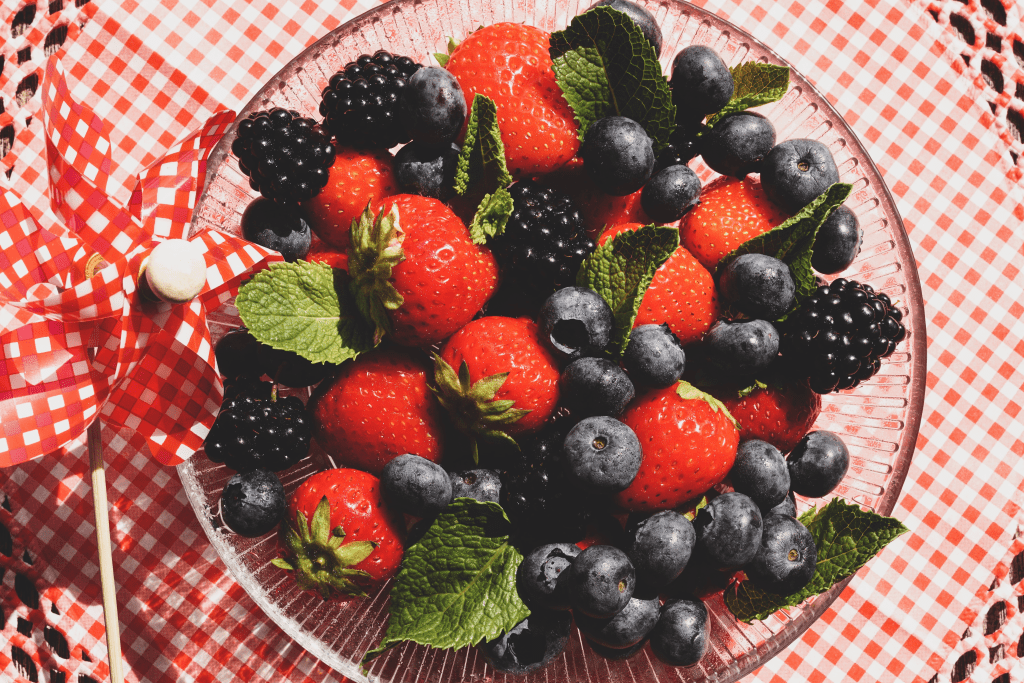
All the famous five berries have low caloric density. In 100-gram portions, blueberries have the highest calories at 57, and strawberries have the lowest at 32. They all have negligible amounts of fats and tiny amounts of proteins. Regarding carbohydrate content, all five berries have sugars and fibers. And the ratio of fiber to sugar is quite telling and creates some differentiation. Raspberries have the highest fiber-to-sugar ratio at 1.5. Blackberries come next at 1.1, cranberries at 0.8, strawberries at 0.4, and blueberries at 0.24. the significance of the fiber-to-sugar ratio is that fiber can slow down the absorption of sugars when consumed together.
This will consequently reduce the spikes of blood glucose and insulin, a favorable health outcome for people with health conditions requiring tight blood glucose or insulin management, like diabetes and cardiovascular diseases. This can be helpful as well for weight management. Finally, regarding minerals, all berries contain no sodium; they are quite a good source of copper and manganese, especially raspberries and blackberries. Berries, especially strawberries, are a good source of vitamin C and supply 65% of daily needs in 100-gram portions.
Berries are truly superfoods; in my top 100 superfoods list, berries occupy positions 2 to 10. This is due to their great taste and texture, low caloric density, and many healthy fibers. But that’s not the whole story; berries are a great source of phytochemical compounds with many human health benefits. We talked about flavonols earlier and their role as antioxidants. Berries also contain other essential phytonutrients like anthocyanins and ellagitannins that work together with flavonols, fibers, and vitamins, contributing to their anti-cancer, anti-diabetic, anti-inflammatory, and cardio-protective roles.
Avocados
The five-thousand-year-old fruits are widely grown in the Americas and are often called the alligator’s pear. What makes Avocados stand out as a superfood is the combination of monounsaturated fatty acids, fibers, vitamin K, and plant sterols. That are medically reviewed and scientifically proven to improve cardiovascular health, weight management, cognitive function, and skin health. The most widely available variety, grown in California and Mexico, is Hass Avocados. They are well nutritionally reviewed and assessed, making consumers reassured about the nutritional value they are getting from Avocados.
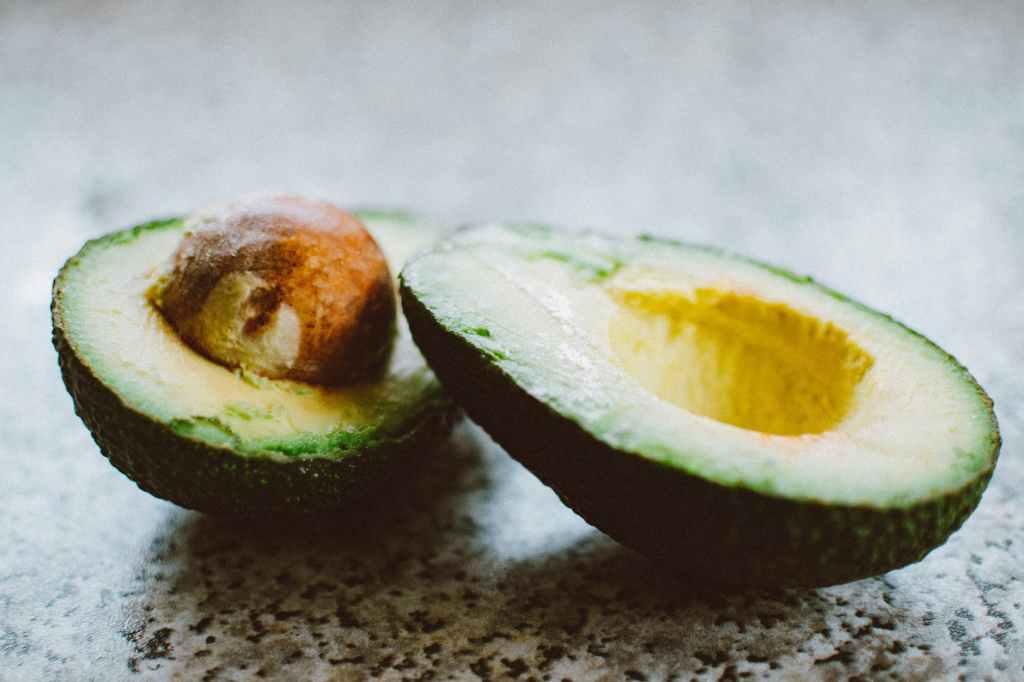
Let’s start as usual with the most abundant nutrient: avocados have 70% water, followed by 15% fats. This makes fats the major contributor to calories in avocadoes. The fatty acid profile of avocadoes has a 6:1 ratio of monounsaturated and polyunsaturated fats to saturated fats. This ratio exist in superfoods like olive oil and almonds. It is also well known to support the reduction of LDL cholesterol and is recommended by many dietary guidelines worldwide. Replacing 5% of energy intake from saturated fatty acids with monounsaturated fatty acids can reduce coronary heart disease risk by 15%. You can achieve this goal by eating one medium-sized avocado fruit per day.
This is not the whole story; this fantastic fatty acid ratio in combination with having very little sugar or starch content. The main carbohydrates in avocados are soluble and insoluble fibers. Avocadoes supply more fiber per 100 grams than lettuce, carrots, onions, potatoes, bananas, apples, oranges, or tomatoes. This high fiber content supports a healthy gut microbiota, satiety, and weight management. Finally, avocadoes are a powerhouse of vitamins and minerals; a medium-size avocado fruit provides 45% of the daily requirements of vitamin B5, 30% of vitamin K, 30% of folic acid, 30% of copper, 24% of vitamin B2, 18% of vitamins B3 and B6, 18% of vitamin E, 18% of potassium, and 14% or vitamin C. Simply consuming one medium-sized avocado is like ingesting a high bioavailability superfoods supplement.
Similar to its superfood cousins, avocados are rich in bioactive compounds that have various health benefits to human health, like fatty alcohols, phenolic compounds, organic acids, carotenoids, and sterols. Pre-clinical and clinical data support their potential in cancer prevention and intervention. They also have documented benefits as antioxidants to scavenge free radicals, support metabolic health, and control blood pressure. There is room for more clinical evidence to support many of those promising health benefits potential.
Key Takeaways
The word superfoods is a marketing terminology to describe nutrient-dense foods. Yet, I find it helpful for consumers as it highlights the high nutritional values of foods like sweet potatoes, chia seeds, berries, avocados, quinoa, pomegranates, olive oil, and many others. The most important takeaway is to be critical of all the content you read and see on traditional and social media related to superfoods and nutrition. Do your research and validate the information that you find interesting using easily accessible resources like USDA FoodData and PubMed. Be confident with the complex nature of scientific expressions. Building your knowledge in this domain is essential to support your strive for health and well-being.
I hope this reading helped shed some light and demystify the topic of superfoods; let me know what you think in the comments and if you would like me to cover additional foods not covered in this article.

![[original_title]](https://rawnews.com/wp-content/uploads/2024/04/pexels-photo-6303759-2696944505-e1704120875541-1024x682.jpeg)












